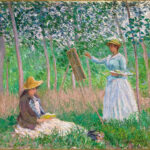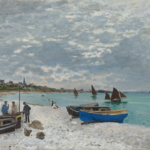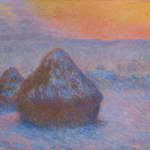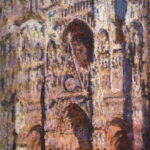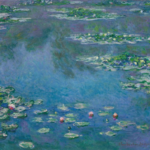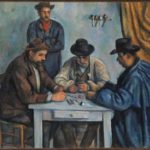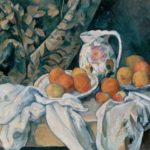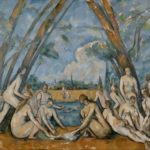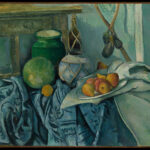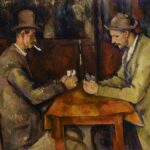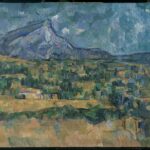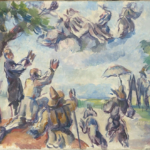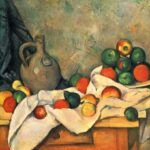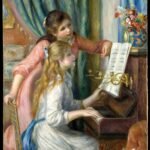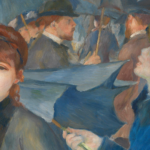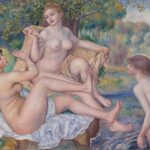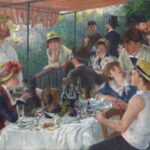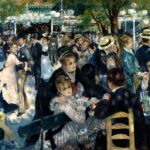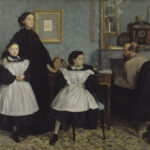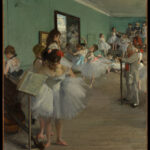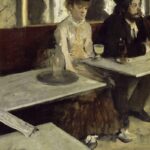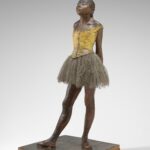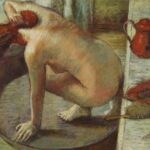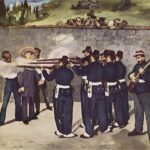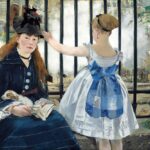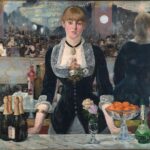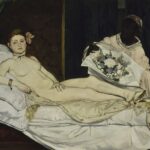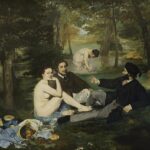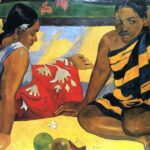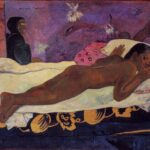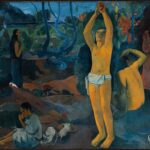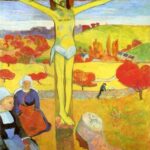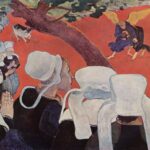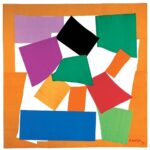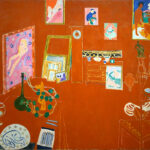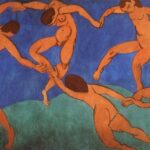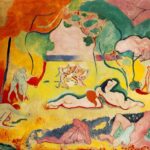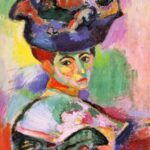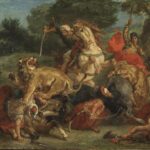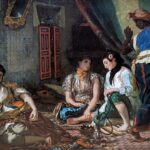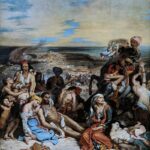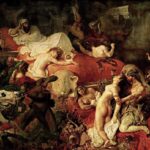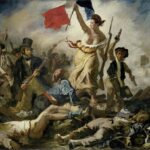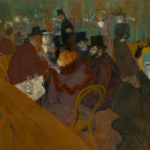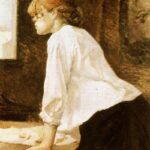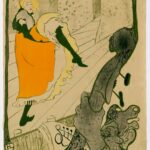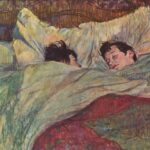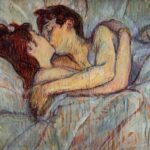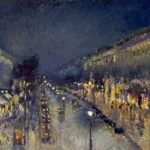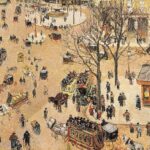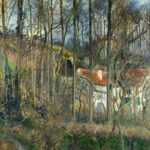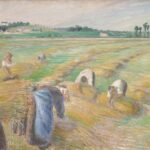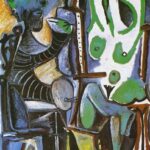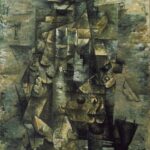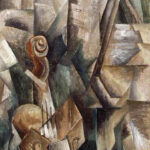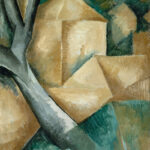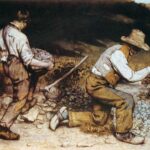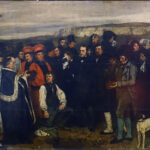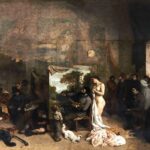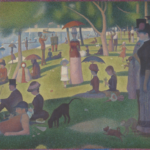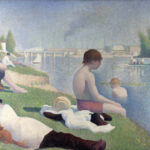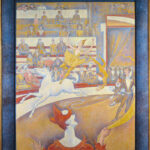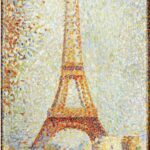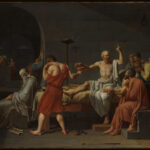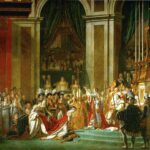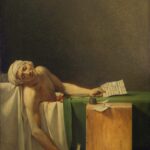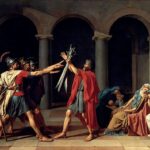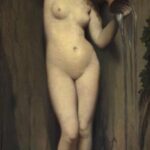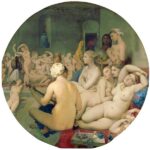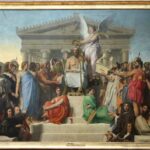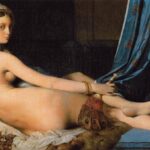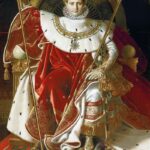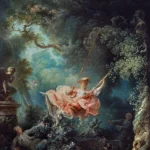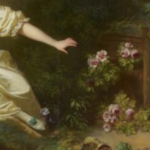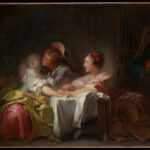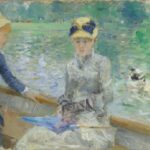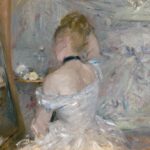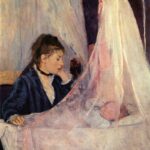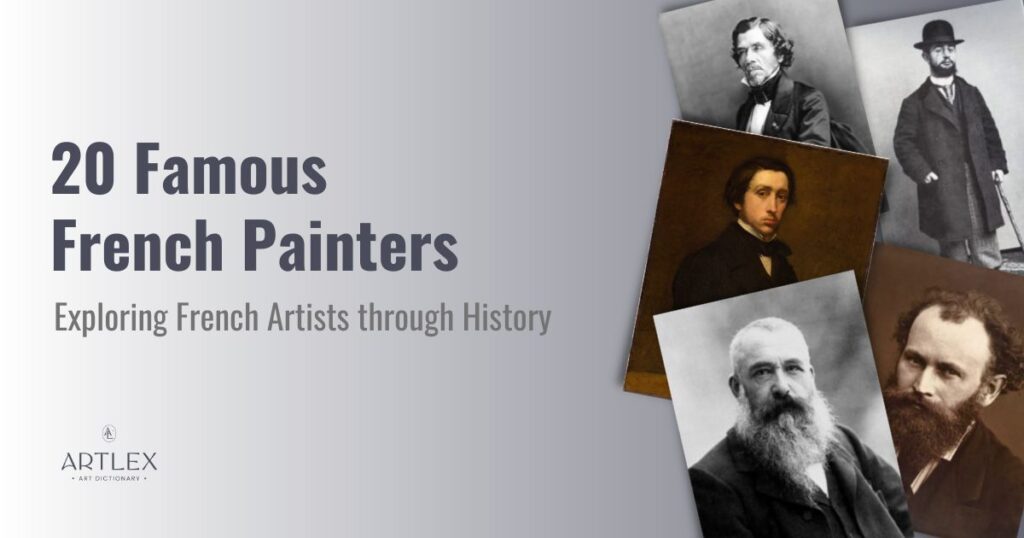
France has produced some of the most renowned and influential painters in the history of art. In this blog post, we will introduce you to ten of them and their amazing works. From Impressionism to Post-Impressionism, these artists have changed the way we see and appreciate art. Join us as we discover their stories and styles.
Claude Monet: The Father of Impressionism
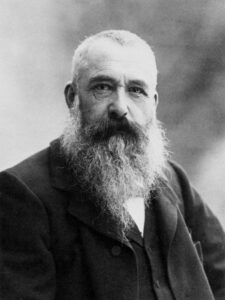
Monet was a most famous French painter who pioneered the Impressionist style and was a master of French art.
Monet’s early paintings were mostly landscapes and seascapes, and he began to develop his signature style of loose brushstrokes and vibrant colors. In 1874, Monet helped organize the first Impressionist exhibition, which included works by himself and other artists who shared his interest in capturing the fleeting effects of light and color.
Throughout his career, Monet continued to experiment with new techniques and subjects. He painted series of haystacks, poplars, and water lilies, each time exploring different aspects of light and atmosphere. He also traveled extensively, painting in London, Venice, and other European cities.
Claude Monet Facts
- Full Name: Oscar-Claude Monet
- Birth year: 1840
- Death year: 1926
- City of birth: Paris, France
- Notable characteristics/subject matter: Painting in the open air, capturing natural light and atmosphere, producing repeated studies of the same motif in series, and creating famous paintings of landscapes, seascapes, gardens, water lilies, haystacks, cathedrals, etc.
- Notable artwork: Impression, Sunrise (1872), The Beach at Sainte-Adresse (1867), Stacks of Wheat (Sunset, Snow Effect) (1891), Rouen Cathedral series (1894), Water Lilies series (1899-1926).
Claude Monet Artwork
Paul Cézanne: The Master of Aix
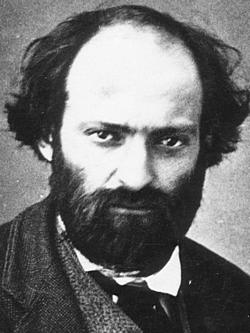
Paul Cézanne (1839-1906) was a French artist who is widely regarded as one of the most influential painters of the late 19th and early 20th centuries. He was born in Aix-en-Provence, France, and began painting in his youth, eventually studying under the Academic painter Charles Gleyre in Paris.
Cézanne’s early paintings were influenced by the Impressionists, but he quickly began to develop his own unique style. He rejected the idea of art as mere imitation and instead sought to capture the underlying structure and form of his subjects. He was interested in the way that objects relate to each other in space, and he often painted multiple views of the same subject from different angles. He is often considered a bridge between the Impressionist and Cubist movements, and his emphasis on the underlying structure of form and space helped pave the way for the development of abstraction in the 20th century.
Paul Cézanne Facts
- Birth year: 1839
- Death year: 1906
- City of birth: Aix-en-Provence, France
- Notable characteristics/subject matter: Challenging the conventional values of painting by emphasizing the underlying structure and formal qualities of objects and scenes, using planes of color and small brushstrokes to create complex fields, influencing avant-garde artistic movements such as Cubism.
- Notable artwork: Mont Sainte-Victoire (1885–1906), Apothéose de Delacroix (1890–1894), Rideau, Cruchon et Compotier (1893–94), The Card Players (1890–1895), The Bathers (1898–1905), etc.
Paul Cézanne Artwork
Pierre-Auguste Renoir: The Celebrator of Beauty
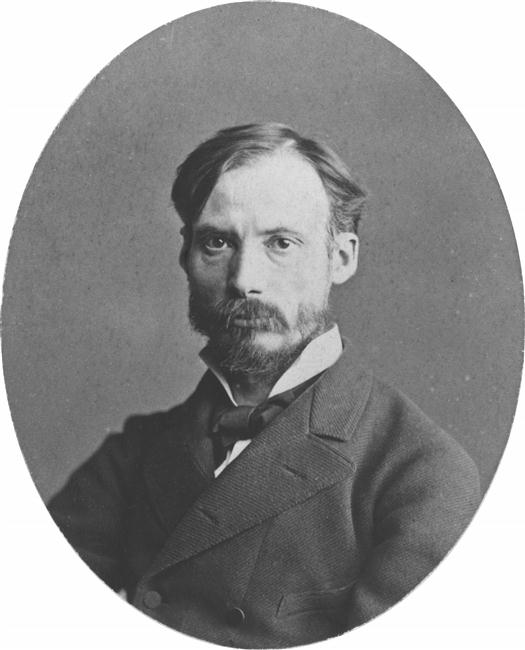
Pierre-Auguste Renoir (1841-1919) was a French painter who is known for his luminous and colorful paintings of people, landscapes, and still lifes. He was born in Limoges, France, and moved to Paris as a young man to study art.
Renoir’s early paintings were influenced by the Impressionist movement, and he was associated with artists such as Claude Monet and Edouard Manet. He was particularly interested in the effects of light and atmosphere, and he often painted en plein air (outdoors) to capture the changing colors and moods of the natural world.
Pierre-Auguste Renoir Facts
- Birth year: 1841
- Death year: 1919
- City of birth: Limoges, France
- Notable characteristics/subject matter: Painting lively scenes of modern life, especially of women and children, using vibrant colors and fluid brushstrokes, capturing the effects of light and movement, depicting landscapes, portraits, still lifes, nudes, etc.
- Notable artwork: Bal du moulin de la Galette (1876), Luncheon of the Boating Party (1881), The Large Bathers (1884-87), The Umbrellas (1881-86), Girls at the Piano (1892).
Pierre-Auguste Renoir Artwork
Edgar Degas: The Painter of Movement
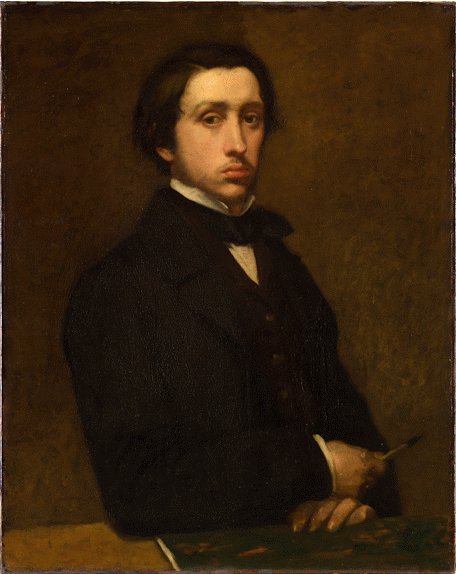
Edgar Degas (1834-1917) was a French painter, sculptor, and printmaker who is known for his depictions of the ballet, Parisian life, and racehorses. He was born in Paris to a wealthy family, and he studied at the École des Beaux-Arts under the Academic painter Louis Lamothe.
Degas was associated with the Impressionist movement, but he considered himself a Realist and preferred to be known as such. He was interested in capturing the fleeting moments of modern life, and he often painted dancers, cabaret scenes, and women at their toilettes.
Edgar Degas Facts
- Birth year: 1834
- Death year: 1917
- City of birth: Paris, France
- Notable characteristics/subject matter: Painting human figures, especially dancers, women at their toilette, and scenes of urban life, using expressive brushstrokes, vibrant colors, and innovative compositions, capturing the effects of light and movement, experimenting with various media and techniques, such as pastel, etching, sculpture, and photography.
- Notable artwork: The Bellelli Family (1858-67), The Dance Class (1874), The Absinthe Drinker (1876), Little Dancer of Fourteen Years (1881), The Tub (1886).
Edgar Degas Artwork
Edouard Manet: The Rebel of Modern Art
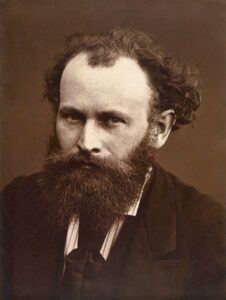
Manet was a famous French painter who was one of the first artists to paint modern life and a pivotal figure in the transition from Realism to Impressionism. Manet’s early paintings were heavily influenced by Spanish art, particularly the works of Diego Velázquez and Francisco de Goya. He painted portraits, genre scenes, and still lifes, often with a sharp focus on contemporary Parisian life and its social customs.
In the 1860s, Manet began to experiment with looser brushwork and brighter colors, and he became a key figure in the emergence of Impressionism. His paintings of café scenes, ballet dancers, and street scenes captured the shifting light and atmosphere of modern life, and he was known for his bold compositions and use of black.
Despite his contributions to the Impressionist movement, Manet never considered himself an Impressionist and often exhibited his work separately. He was known for his independent spirit and willingness to challenge artistic conventions, and his paintings often sparked controversy and criticism.
Edouard Manet Facts
- Birth year: 1832
- Death year: 1883
- City of birth: Paris, France
- Notable characteristics/subject matter: Painting contemporary subjects, such as urban scenes, café life, and leisure activities, using bold colors and contrasts, flattening the perspective and eliminating the details, challenging the academic conventions and provoking the public, depicting nudes, still lifes, portraits, etc.
- Notable artwork: Le Déjeuner sur l’herbe (1863), Olympia (1863), A Bar at the Folies-Bergère (1882), The Railway (1873), The Execution of Emperor Maximilian (1868-69).
Edouard Manet Artwork
Paul Gauguin: The Primitivist of Modern Art
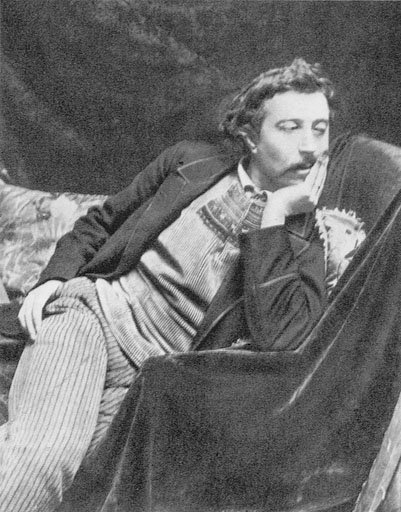
Gauguin was one of the most famous French artists who was one of the leading figures of Post-Impressionism and Primitivism. He developed a distinctive style that combined simplified forms, vivid colors, and symbolic meanings.
Paul Gauguin Facts
- Birth year: 1848
- Death year: 1903
- City of birth: Paris, France
- Notable characteristics/subject matter: Painting exotic and primitive subjects, such as Tahitian women, landscapes, and culture, using bright colors and flat forms, creating symbolic and expressive compositions, experimenting with woodcuts and ceramics, influencing avant-garde movements such as Fauvism and Expressionism.
- Notable artwork: Vision After the Sermon (1888), The Yellow Christ (1889), Where Do We Come From? What Are We? Where Are We Going? (1897-98), Spirit of the Dead Watching (1892), Tahitian Women on the Beach (1891).
Paul Gauguin Artwork
Henri Matisse: The Master of Color
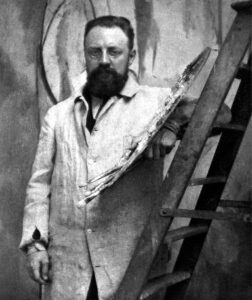
Matisse was one of the most French artists who was one of the most important and influential artists of the 20th century. He was the leader of the Fauvist movement, which used bold and unnatural colors to express emotions.
Henri Matisse Facts
- Birth year: 1869
- Death year: 1954
- City of birth: Le Cateau-Cambrésis, France
- Notable characteristics/subject matter: Painting with vibrant and expressive colors, simplifying the forms and outlines, creating harmonious and decorative compositions, exploring various media and techniques, such as drawing, printmaking, sculpture, and collage, influencing avant-garde movements such as Fauvism and Modernism of the art world.
- Notable artwork: Woman with a Hat (1905), The Joy of Life (1906), The Dance (1910), Red Studio (1911), The Snail (1953)
Henri Matisse Artwork
Eugène Delacroix: The Leader of Romanticism
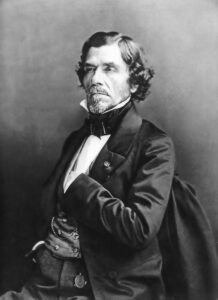
Delacroix was one of the most famous French painters who was one of the greatest representatives of the Romantic movement. He also received commissions for mural paintings in public buildings, such as the Louvre and the Chamber of Deputies.
Eugène Delacroix Facts
- Birth year: 1798
- Death year: 1863
- City of birth: Charenton-Saint-Maurice, France
- Notable characteristics/subject matter: Painting historical and literary subjects, such as scenes from the Greek War of Independence, the French Revolution, and the works of Shakespeare and Byron, using dramatic colors and brushstrokes, creating a sense of movement and emotion, depicting exotic and oriental themes, such as landscapes and costumes of North Africa and the Middle East.
- Notable artwork: Liberty Leading the People (1830), The Death of Sardanapalus (1827), The Massacre at Chios (1824), Women of Algiers in their Apartment (1834), The Lion Hunt (1854).
Eugène Delacroix Artwork
Henri de Toulouse-Lautrec: The Chronicler of Montmarte
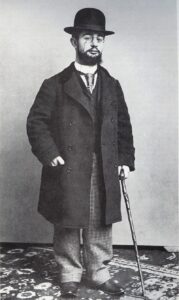
Toulouse-Lautrec was one of the most famous French painters who was one of the most original and influential artists of the Post-Impressionist period. He used lithography as his main medium for his graphic works, which were characterized by simplified forms, flat colors, and dynamic compositions.
Henri de Toulouse-Lautrec Facts
- Birth year: 1864
- Death year: 1901
- City of birth: Albi, France
- Notable characteristics/subject matter: Painting the colorful and theatrical life of Paris, especially the bohemian district of Montmartre, where he lived and worked, using expressive lines and flat colors, creating posters and illustrations for magazines and theaters, depicting cabarets, cafés, brothels, circuses, etc.
- Notable artwork: At the Moulin Rouge (1892-95), The Laundress (1886-88), Jane Avril (1893), In Bed (1893), In Bed: The Kiss (1892).
Henri de Toulouse-Lautrec Artwork
Camille Pissarro: The Father of Impressionism
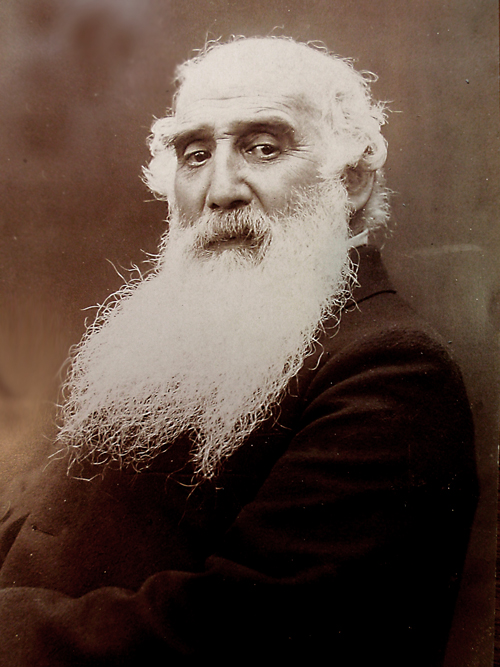
Pissarro was one of the most famous French painters who was one of the founders and most influential members of the Impressionist movement. He was also open to new developments in art and experimented with various styles and techniques, such as Pointillism and Divisionism.
Camille Pissarro Facts
- Birth year: 1830
- Death year: 1903
- City of birth: Saint Thomas, Danish West Indies (now U.S. Virgin Islands)
- Notable characteristics/subject matter: Painting rural and urban scenes, especially of peasants and workers, using bright and varied colors, applying small and loose brushstrokes, creating a sense of light and atmosphere, experimenting with different styles and techniques, such as Pointillism and Divisionism, influencing and supporting other Impressionist and Post-Impressionist artists.
- Notable artwork: The Boulevard Montmartre at Night (1897), The Côte des Bœufs at L’Hermitage (1877), La Place du Théâtre Français (1898), The Harvest (1882).
Camille Pissarro Artwork
Georges Braque
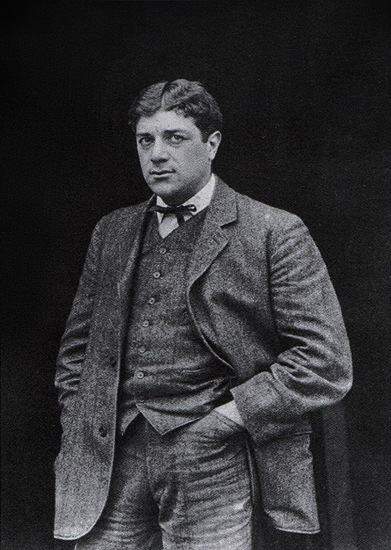
Was one of the most famous French painters who co-founded Cubism with Pablo Picasso. He also experimented with Fauvism, collage, and sculpture. He was known for his innovative use of geometric shapes, perspective, and color to create complex compositions.
Georges Braque Facts
- Birth year: 1882
- Death year: 1963
- City of birth: Argenteuil, France
- Notable characteristics/subject matter: Cubism, Fauvism, still lifes, landscapes, musical instruments
- Notable artwork: Houses at L’Estaque (1908), Violin and Palette (1909), Man with a Guitar (1911), The Painter and His Model (1963)
Georges Braque Artwork
Gustave Courbet
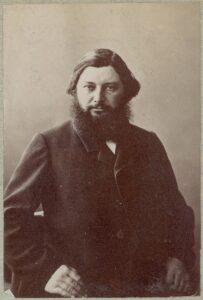
Was one of the most famous French artists who led the Realism movement in the 19th century. He rejected the Romantic and academic styles of his time and painted scenes from everyday life with honesty and boldness. He was a French artist that challenged the social and political norms of his era in the art world with his controversial works, such as The Stone Breakers and The Origin of the World.
Gustave Courbet Facts
- Birth year: 1819
- Death year: 1877
- City of birth: Ornans, France
- Notable characteristics/subject matter: Realism, social criticism, landscapes, nudes, still lifes
- Notable artwork: The Stone Breakers (1849), A Burial at Ornans (1850), The Painter’s Studio (1855)
Gustave Courbet Artwork
Georges Seurat
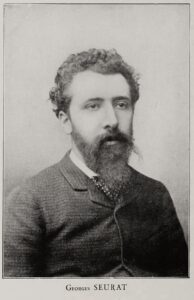
Was one of the most famous French painters who founded the Neo-Impressionist movement. He was the French artist that developed a technique called pointillism, which involved painting with tiny dots of pure colors that blended in the eye of the viewer. He also studied the effects of light and color on perception and emotion. He painted scenes of modern life, such as urban landscapes, parks, circuses, and beaches.
Georges Seurat Facts
- Birth year: 1859
- Death year: 1891
- City of birth: Paris, France
- Notable characteristics/subject matter: Neo-Impressionism, pointillism, chromoluminarism, light and color theory, modern life
- Notable artwork: A Sunday Afternoon on the Island of La Grande Jatte (1884–86), Bathers at Asnières (1884), The Circus (1891), The Eiffel Tower (1889)
Georges Seurat Artwork
Jacques-Louis David
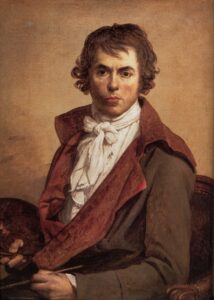
Was one of the best known French painters who was a leader of the Neoclassical movement. He was influenced by the classical art and literature of ancient Greece and Rome, and he painted historical, mythological, and religious subjects with a sense of drama and emotion. He was also a supporter of the French Revolution and Napoleon, and he used his art as a means of propaganda and political expression. He was a master of composition, color, and technique, and he had many pupils and followers.
Jacques-Louis David Facts
- Birth year: 1748
- Death year: 1825
- City of birth: Paris, France
- Notable characteristics/subject matter: Neoclassicism, history painting, political themes, realism
- Notable artwork: Oath of the Horatii (1784), The Death of Marat (1793), The Coronation of Napoleon (1805–07), The Death of Socrates (1787)
Jacques-Louis David Artwork
Jean Auguste Dominique Ingres
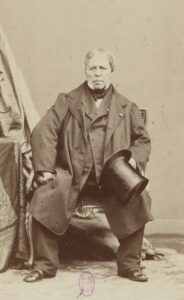
Was one of the most famous French painters who was a leading figure in the Neoclassical movement. He was a student of Jacques-Louis David, and he admired the artistic style of Raphael and Poussin. He painted historical, mythological, and religious scenes with clarity and precision, as well as portraits and nude women with sensuality and elegance. He was also a skilled draftsman and violinist. He had a long and successful career, and he influenced many later non-French and French artists, such as Edgar Degas and Pablo Picasso.
Jean Auguste Dominique Ingres Facts
- Birth year: 1780
- Death year: 1867
- City of birth: Montauban, France
- Notable characteristics/subject matter: Neoclassicism, history painting, portrait painting, realism, distortion
- Notable artwork: Napoleon I on his Imperial Throne (1806), The Grand Odalisque (1814), The Apotheosis of Homer (1827), The Turkish Bath (1862), The Source (1856)
Artwork
Nicolas Poussin
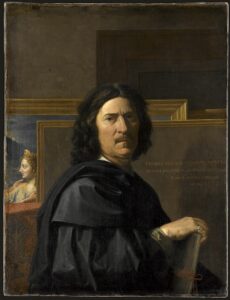
Was one of the most famous French painters who is regarded as the founder of the French classical tradition. He spent most of his career in Rome, where he was influenced by the art of ancient Greece and Rome, as well as by Raphael and Titian. He painted scenes from the Bible, ancient history, and mythology with clarity, logic, and harmony.
Nicolas Poussin Facts
- Birth year: 1594
- Death year: 1665
- City of birth: Les Andelys, France
- Notable characteristics/subject matter: Classicism, history painting, religious painting, mythological painting
- Notable artwork: The Death of Germanicus (1628), The Rape of the Sabine Women (1637–38), Et in Arcadia ego (1637–38), The Adoration of the Golden Calf (1633–34), The Four Seasons (1660–64)
Rosa Bonheur
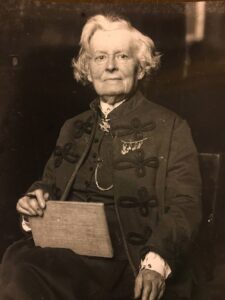
Was one of the most famous French painters and sculptors who specialized in realistic depictions of animals. She was one of the most famous and successful female artists of the 19th century, and received many honors and awards for her work. She was also a pioneer of women’s rights and animal welfare, and lived an unconventional and independent life.
Rosa Bonheur Facts
- Birth year: 1822
- Death year: 1899
- City of birth: Bordeaux, France
- Notable characteristics/subject matter: animal painting, realism, feminism, cross-dressing
- Notable artwork: The famous paint, The Horse Fair (1853), Ploughing in the Nivernais (1849), Sheep by the Sea (1865)
Jean-Honoré Fragonard
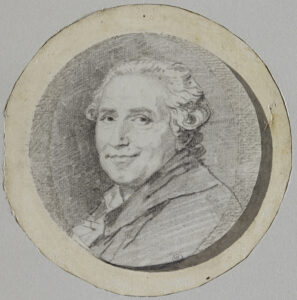
Was a famous French painter and printmaker who was one of the most prolific and influential artists of the Rococo style. He is best known for his scenes of love and pleasure, often featuring playful and erotic motifs. He also painted portraits, landscapes, religious and historical subjects. He enjoyed a successful career and patronage from the aristocracy, but his fortunes declined after the French Revolution.
Jean-Honoré Fragonard Facts
- Birth year: 1732
- Death year: 1806
- City of birth: Grasse, France
- Notable characteristics/subject matter: Rococo, love and pleasure, eroticism, genre painting
- Notable artwork: The Swing (1767), The Progress of Love (1771-1773), The Stolen Kiss (1786)
Jean-Honoré Fragonard Artwork
Berthe Morisot
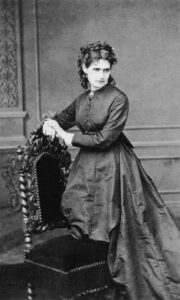
Berthe Morisot was one of the most famous French painters and one of the first and most prominent female Impressionists. She was an art lover of French art who painted scenes of domestic life, portraits, landscapes and flowers, using light and delicate brushstrokes. She was also an active participant in the Impressionist exhibitions and a close friend of many of the leading artists of the movement, such as Manet, Monet and Renoir. She influenced and inspired many other women artists of her time and beyond.
Berthe Morisot Facts
- Birth year: 1841
- Death year: 1895
- City of birth: Bourges, France
- Notable characteristics/subject matter: Impressionism, domestic life, portraits, landscapes, flowers
- Notable artwork: The Cradle (1872), Woman at Her Toilette (1875), Summer’s Day (1879)

